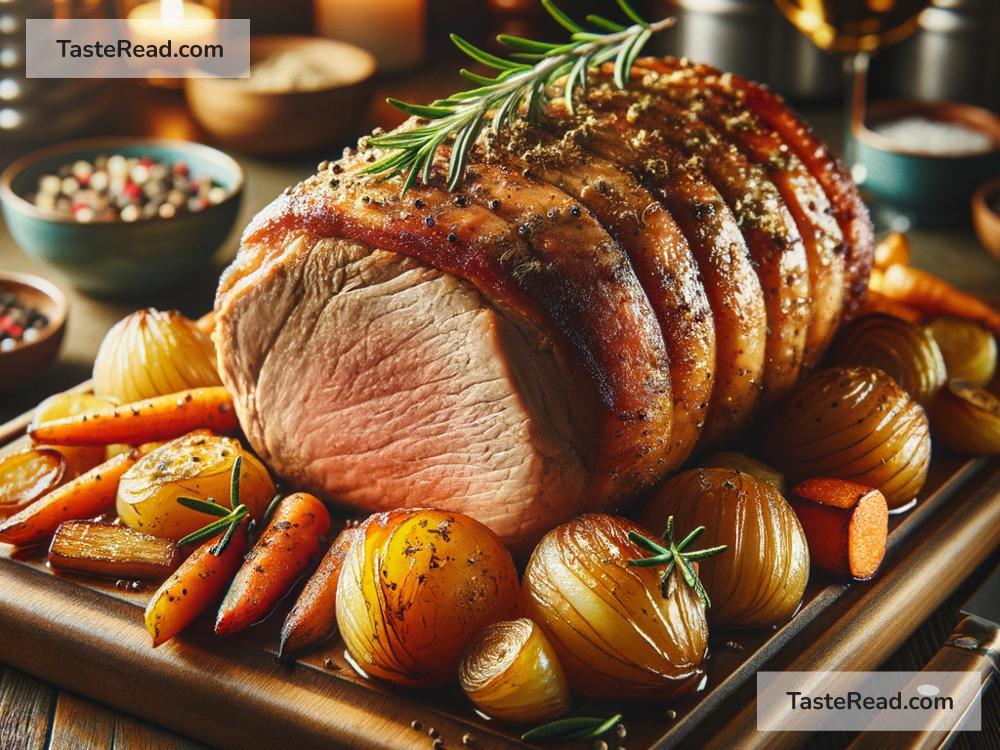The Perfect Classic Pork Roast: A Step-by-Step Guide
There’s something wonderfully comforting about a classic pork roast. Whether it’s a holiday meal or just Sunday dinner, this flavorful dish brings people together at the table. The beauty of a pork roast is that it’s easy to prepare, yet tastes impressive. With just a few simple ingredients and easy steps, you can create a juicy, tender roast full of flavor. In this blog, we’ll walk you through the entire process, keeping it simple so anyone can follow along—no fancy cooking skills required!
Ingredients: What You’ll Need
Before we get started, let’s gather the ingredients. Here’s a list of what you’ll need:
Main Ingredients:
- Pork roast (about 3 to 4 pounds)—you can choose pork loin or pork shoulder, depending on your preference.
- Olive oil (2 tablespoons)
- Salt (to taste)
- Black pepper (to taste)
- Garlic powder (1 teaspoon)
- Paprika (1 teaspoon)
- Dried rosemary (1 teaspoon)
Optional:
- Vegetables: Carrots, potatoes, or onions to roast alongside the pork.
Step 1: Prep Your Pork
First, take your pork roast out of the fridge. Let it sit at room temperature for about 20 to 30 minutes—this helps the meat cook more evenly.
Once it’s ready, pat the pork dry with paper towels. Removing excess moisture ensures a nice crust when you roast it.
Step 2: Make the Seasoning Mix
In a small bowl, combine the following:
– 1 teaspoon garlic powder
– 1 teaspoon paprika
– 1 teaspoon dried rosemary
– Salt and black pepper to taste.
Mix these spices together. This will create a simple yet delicious rub for your pork.
Step 3: Rub the Roast
Rub olive oil all over the pork roast. This helps the seasoning stick and promotes a golden, crispy crust.
Next, take your seasoning mix and rub it generously over the pork. Cover all sides—don’t be shy! This will give the roast its delicious flavor.
Step 4: Prepare a Roasting Pan
Grab a roasting pan or baking dish. If you’re adding vegetables (like carrots, potatoes, or onions), chop them into bite-sized pieces and arrange them in the pan. Drizzle the veggies with olive oil and sprinkle a little salt and pepper on top.
Place the seasoned pork roast in the center of the pan, surrounded by the vegetables if you’re using them.
Step 5: Preheat the Oven
Preheat your oven to 350°F (175°C). This temperature is perfect for roasting pork slowly. Slow roasting ensures the meat stays juicy and tender.
Step 6: Roast the Pork
Place the roasting pan with your pork roast in the oven. Cook the pork at 350°F for about 20 minutes per pound. For example:
– A 3-pound roast will take roughly 1 hour.
– A 4-pound roast will take around 1 hour and 20 minutes.
Halfway through cooking, you can use a spoon to drizzle or “baste” the pork with some of the juices in the pan. This keeps the meat moist and flavorful.
Step 7: Check the Temperature
To ensure the pork is fully cooked but not overdone, use a meat thermometer. Insert the thermometer into the thickest part of the roast (avoid hitting bone, if there’s any).
The internal temperature for perfectly cooked pork should be 145°F (63°C). This temperature gives you a slightly pink, juicy center, which is safe to eat and recommended by food safety guidelines.
If the temperature hasn’t reached 145°F yet, return it to the oven and check again after 10 to 15 minutes.
Step 8: Let the Pork Rest
Once the pork roast is done, remove it from the oven and place it on a cutting board. Cover the roast loosely with aluminum foil and let it rest for 10–15 minutes. This step is crucial! Resting allows the juices to redistribute throughout the meat, making it extra tender and flavorful.
Step 9: Slice and Serve
After resting, use a sharp knife to slice the pork roast into thick, juicy pieces. Serve it alongside the roasted vegetables or with your favorite sides, like mashed potatoes or green beans.
And there you have it—a classic pork roast ready to impress your family and friends!
Tips for Success
- Choose the right cut: Pork loin is leaner and cooks faster, while pork shoulder has more fat and creates a rich, flavorful roast. Pick whichever suits your taste!
- Don’t skip the spices: Even basic seasonings like garlic powder and rosemary go a long way toward boosting flavor.
- Use a thermometer: Measuring temperature is the best way to avoid overcooking or undercooking the pork.
Final Thoughts
Creating a classic pork roast isn’t complicated—it just takes a little time and love. With the steps we’ve shared today, you can make a flavorful, juicy roast that feels like a restaurant-quality meal but is simple enough for anyone to tackle. Whether it’s paired with roasted vegetables, mashed potatoes, or a fresh salad, this dish is sure to satisfy.
Try it for your next family meal, and enjoy the delicious results! Happy cooking!


